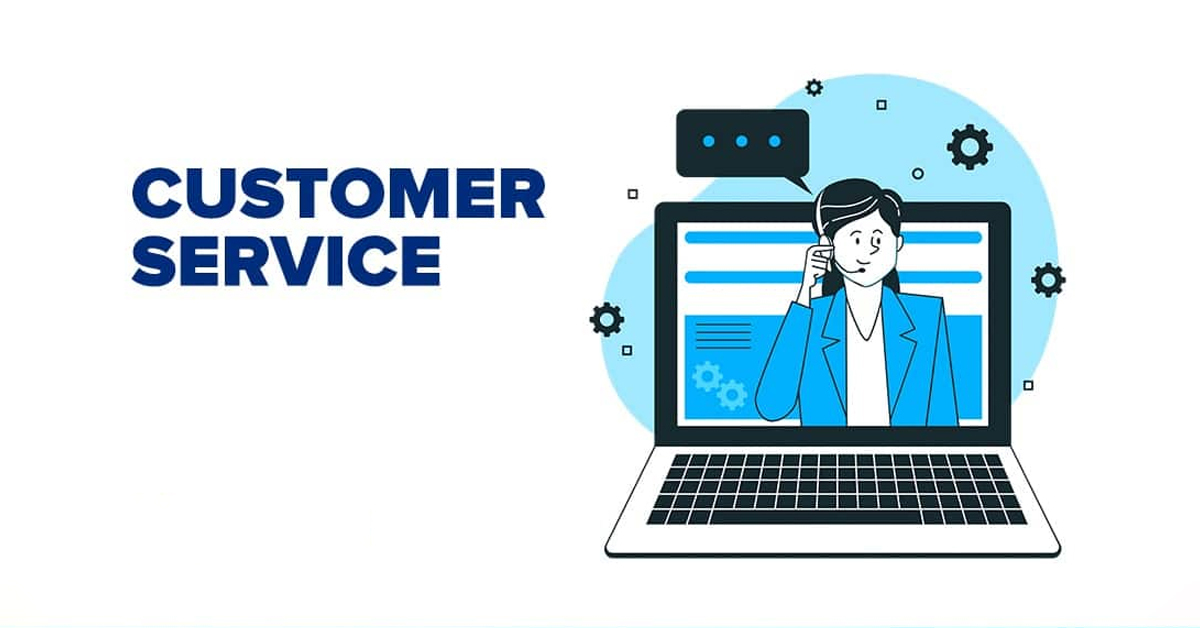Ways To Improve Customer Service In Your Business
The secret to standing out while thriving in the highly competitive business climate of today is to give exceptional customer service top priority. An in-depth analysis of numerous strategies and tactics aimed at improving customer service inside your business will be covered in this blog. The first step to succeeding in today’s customer-focused world is realising the importance of this endeavor. So let’s set out on this adventure together and learn the priceless lessons that will turn your company into an audience service powerhouse.
Businesses that put a high priority on providing excellent client service stand out in today’s cutthroat marketplace where customers have more options than ever. This blog will examine various methods and strategies to improve client relations and advance your company.
Understanding the Importance of Increasing Customer Service
It’s important to comprehend why customer service matters before diving into how to do it better. Several factors make customer service improvement essential rather than just desirable.
Customer Retention: Providing excellent service keeps existing customers coming back, reducing churn and increasing revenue.
Word-of-Mouth Marketing: Satisfied customers become brand advocates, spreading positive word-of-mouth, and attracting new customers.
Competitive Advantage: Exceptional service differentiates your business in a crowded market, giving you a competitive edge.
Profitability: Happy customers are more likely to make repeat purchases and spend more, directly impacting your bottom line.
Let’s look into practical methods for implementing customer service improvement now that its importance has been established.
Elevating Client Experience
Personalization: Tailor your interactions and offerings to meet individual customer needs and preferences. Use data and technology to provide personalised recommendations.
Active Listening: Train your team to listen actively, understand customer concerns, and address them promptly. Make customers feel heard and valued.
Swift Issue Resolution: Respond to customer complaints and problems swiftly. Empower your team to make decisions that benefit the customer without bureaucratic delays.
Consistent Communication: Keep customers informed about order updates, product releases, or changes in service. Regular communication shows you care about their experience.
Better Customer Support
Multi-Channel Support: Offer support through various channels like phone, email, live chat, and social media to meet customers where they are.
24/7 Availability: If feasible, provide round-the-clock customer support to assist customers in different time zones or with urgent issues.
Self-Service Options: Create a knowledge base or FAQs on your website to allow customers to find answers to common questions independently.
Feedback Mechanism: Encourage customers to provide feedback after each interaction. Use their insights to improve your support processes continually.
Service Excellence
Training and Development: Invest in training your customer service team to ensure they have the skills and knowledge needed to provide exceptional service.
Empathy and Patience: Train your team in empathy and patience. These qualities go a long way in diffusing tense situations and creating positive experiences.
Service Recovery: Have a plan in place for service recovery when things go wrong. How you handle mistakes can turn a negative experience into a positive one.
Metrics and KPIs: Establish clear metrics and key performance indicators (KPIs) to track and measure the effectiveness of your customer service efforts.
Enhancing Customer Satisfaction
Customer Surveys: Conduct regular surveys to gauge customer satisfaction levels and identify areas for improvement.
Benchmarking: Compare your customer service against industry benchmarks to ensure you’re staying competitive.
Continuous Improvement: Implement a culture of continuous improvement, where every team member is encouraged to suggest enhancements.
Customer-Centric Policies: Align your policies and procedures with the goal of providing the best possible customer experience.
Top-notch Client Service
Employee Satisfaction: Happy employees are more likely to provide excellent service. Prioritise employee satisfaction to indirectly improve customer service.
Recognition and Rewards: Recognize and reward exceptional customer service. This motivates employees to consistently deliver their best.
Service Guarantees: Offer service guarantees or warranties to assure customers of your commitment to quality.
Competitor Analysis: Study what your competitors are doing in terms of customer service and find ways to surpass their efforts.
Business Service Enhancement
Technology Integration: Leverage technology, such as CRM software, chatbots, and AI, to streamline processes and provide faster, more efficient service.
Data analysis: Use analytics and customer data to find patterns, tastes, and areas where services could be improved.
Employee Feedback: Gather feedback from your customer service team. They are on the front lines and often have valuable insights.
Customer Education: Educate your customers on how to make the most of your products or services. Informed customers are usually more satisfied.
Customer Care Strategies
Customer Journey Mapping: Understand the customer’s journey from awareness to purchase and post-purchase. Optimise each touchpoint for a seamless experience.
Proactive Support: Anticipate customer needs and provide support before they even ask for it.
Community Building: Create an online community or forum where customers can help each other, reducing the burden on your support team.
Social Responsibility: Engage in corporate social responsibility initiatives that resonate with your customer base. It shows your commitment to values beyond profit.
Elevate Business Customer Service
Leadership Commitment: Ensure that the leadership team is fully committed to delivering exceptional customer service. Their example sets the tone for the entire organisation.
Regular Training: Provide ongoing training to keep your team updated on industry best practices and emerging trends.
Feedback Implementation: Act on customer feedback promptly. Let them know that their input leads to tangible improvements.
Celebrate Successes: Recognize and celebrate customer service achievements within your organisation. This boosts morale and encourages continuous excellence.
Improving Client Relations
Long-Term Perspective: Put more effort into creating long-term connections than pursuing immediate gains. Over time, loyal customers increase in value.
Customised Solutions: Offer tailored solutions to meet specific customer needs, even if it means going the extra mile.
Transparency: Be transparent about your products, pricing, and policies. Trust is a critical component of lasting client relations.
Crisis Management: Have a crisis management plan in place for when unforeseen issues arise. How you handle crises can define your reputation.
Service Excellence Techniques
Role Modelling: Encourage senior leaders to lead by example in delivering excellent service. Their behaviour sets the standard for everyone else.
Mystery Shopping: Use mystery shoppers to evaluate the customer experience objectively. Their feedback can reveal blind spots.
Employee Empowerment: Give your employees the authority and tools they need to resolve issues on their own, reducing the need for escalations.
Cultural Alignment: Ensure that your company’s culture aligns with a customer-centric mindset.
Customer Service Enhancement
Customer-Centric Culture: Embed a customer-centric culture throughout your organisation. Every department should have a customer-focused approach.
Innovation: Encourage innovation in customer service
Adaptability: Be adaptable to changing customer preferences and expectations. What worked yesterday may not work tomorrow.
Measurement and Feedback Loops: Establish feedback loops to gather insights from customers continuously. Use this data to make informed improvements.
Client Relationship Improvement
Diversity and Inclusion: Embrace diversity and inclusion in your customer service team. Diverse perspectives can lead to more creative solutions.
Sustainability: Consider sustainability in your business practices. Many customers appreciate environmentally responsible companies.
Surprise and Delight: Occasionally, surprise customers with unexpected gestures of appreciation, like personalised thank-you notes or discounts.
Global Perspective: If your business operates globally, adapt your customer service to different cultural norms and expectations.
Superior Customer Care
Ethical Practices: Uphold ethical business practices. Customers value companies with integrity.
Accessibility: Ensure that your products, services, and customer support are accessible to all, regardless of disabilities.
Clear Communication: Communicate clearly and transparently, especially regarding changes or disruptions in service.
Long-Term Vision: Always keep the long-term vision in mind when making decisions that affect customer service.
Customer Satisfaction Strategies
Competency Development: Invest in developing your team’s competencies. Knowledgeable employees can serve customers better.
Data Security: Prioritise data security and reassure customers that their information is safe with your company.
Evolving With Technology: Stay updated with technological advancements to meet evolving customer expectations.
Collaboration: Work with other companies or partners to provide customers with all-inclusive solutions.
Effective Customer Support
Response Time: Strive to provide quick responses and resolutions. Customers appreciate not having to wait.
Post-Purchase Engagement: Don’t forget about customers after they make a purchase. Engage with them to build loyalty.
Consistency: Ensure consistent service quality across all touchpoints, whether in-store, online, or over the phone.
Community Engagement: Get involved in your local community to foster goodwill and connect with potential customers.
Conclusion:
Always maintain in mind that providing excellent customer service is an investment in the long-term success of your company, not an expense.We have looked at a number of ways to improve customer service in this blog, but this exploration is not complete. Continue to improve, stay in touch with your clients, and aim for service excellence. Keep in mind that every interaction offers a chance to make a good impression and
FAQs
Q1.How can businesses elevate the client experience?
A1.Businesses can elevate the client experience by personalising interactions, practising active listening, swiftly resolving issues, and maintaining consistent communication.
Q2.What are effective techniques for enhancing customer satisfaction?
A2.Effective techniques for enhancing customer satisfaction include conducting surveys, benchmarking, continuous improvement, and customer-centric policies.
Q3.How can businesses provide top-notch client service?
A3.Businesses can provide top-notch client service by prioritising employee satisfaction, recognizing and rewarding excellence, offering service guarantees, and analysing competitor strategies.
Q4.What role does business service enhancement play in customer service improvement?
A4.Business service enhancement involves leveraging technology, analysing data, gathering employee feedback, and educating customers to improve the overall customer service experience.
Q5.What are some customer care strategies that businesses can implement?
A5.Businesses can implement customer care strategies such as customer journey mapping, proactive support, community building, and corporate social responsibility initiatives.
Q6.What are some effective techniques for achieving service excellence?
A6.Effective techniques for achieving service excellence include role modelling, mystery shopping, employee empowerment, and cultural alignment.
Q7.What role does superior customer care play in business success?
A7.Superior customer care contributes to ethical business practices, accessibility, clear communication, and a long-term vision, all of which enhance business success.








